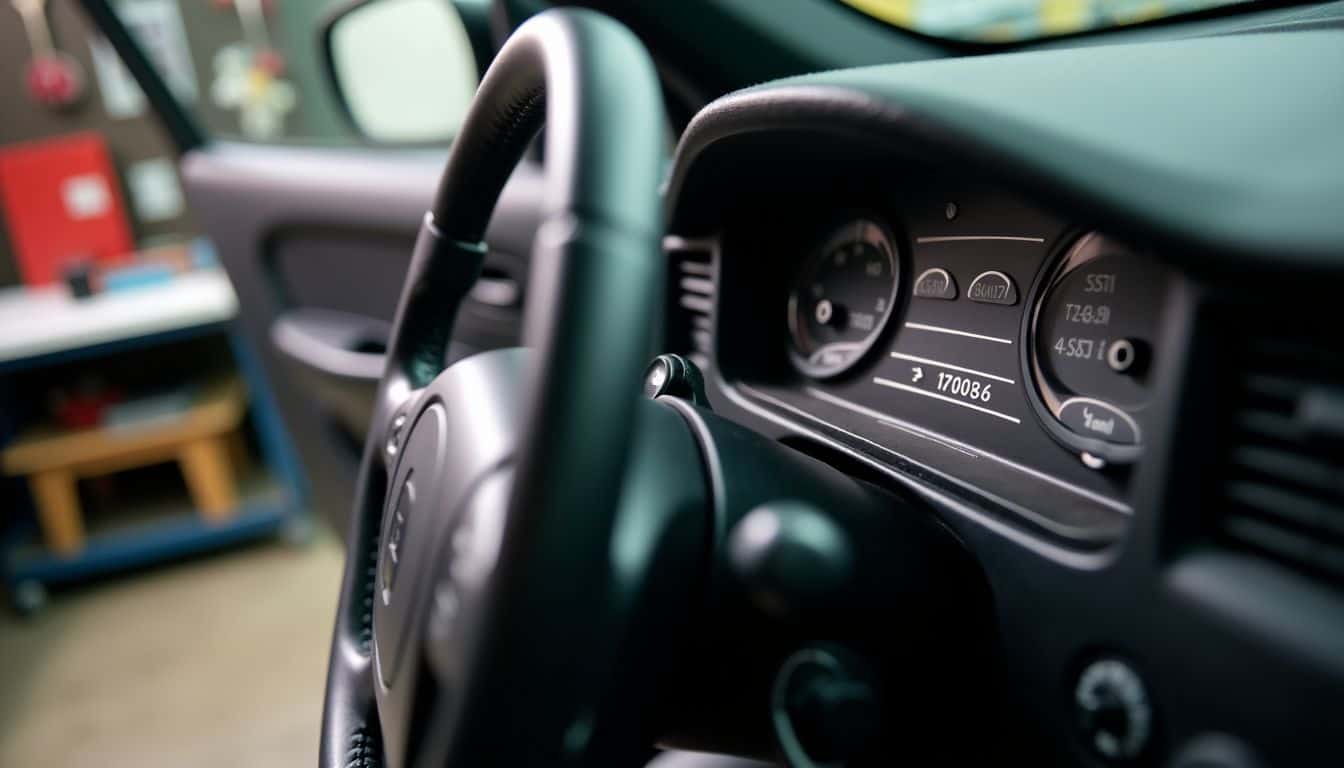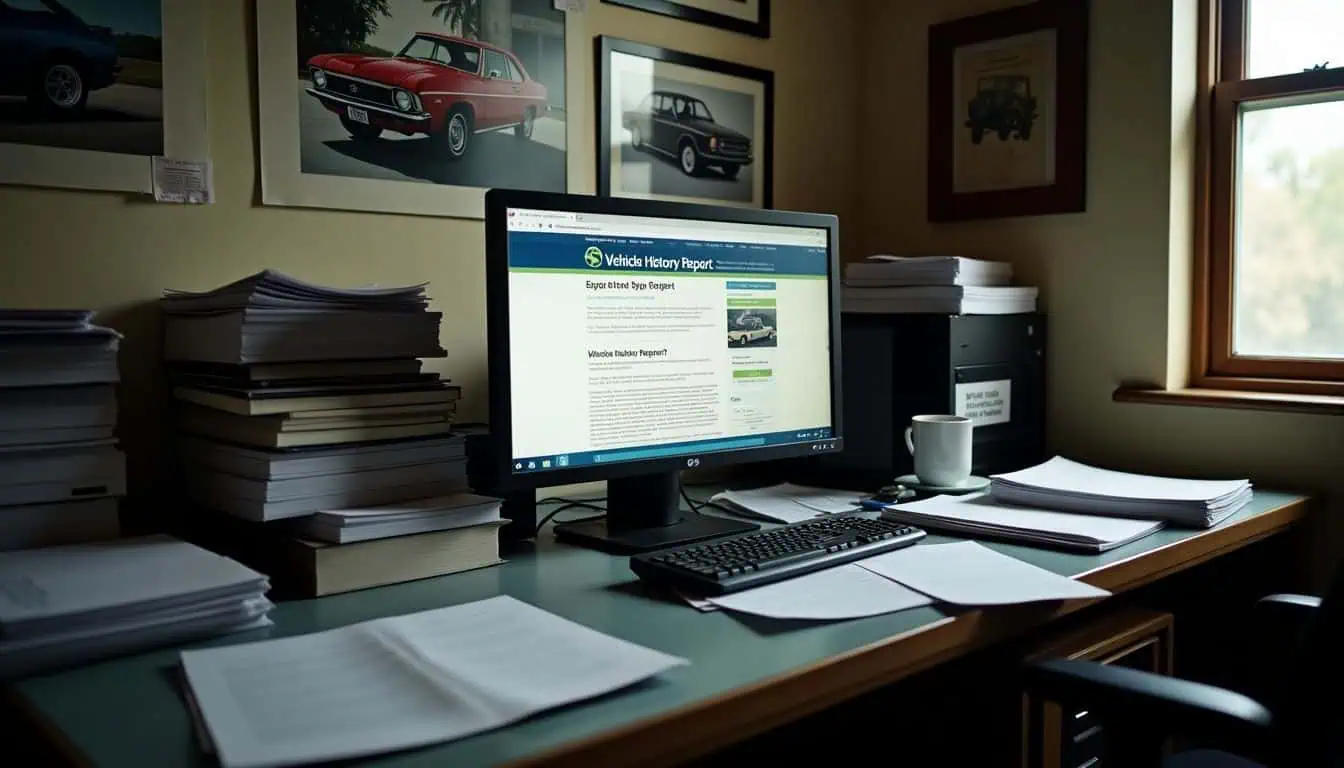Physical Address
304 North Cardinal St.
Dorchester Center, MA 02124
Physical Address
304 North Cardinal St.
Dorchester Center, MA 02124

Your car has a secret code that tells its whole story. Every vehicle made after 1981 must have a 17-digit vehicle identification number (VIN). Learning how to decode a VIN helps you check your car’s history, parts, and safety recalls.
This guide will show you five easy steps to crack your car’s code.

Now that we know why VINs matter, let’s break down what they are. A Vehicle Identification Number (VIN) acts like a car’s DNA code. The National Highway Traffic Safety Administration made these codes standard in 1981.
Each VIN has 17 unique characters that tell a car’s complete story. The auto industry first started using VINs in 1954, but they became more organized in 1979 thanks to the International Organization for Standardization.
A VIN is the automotive equivalent of human fingerprints – no two are exactly alike.
I spot VINs daily in my work at a free VIN number decoder service. The code mixes numbers and letters, but skips O, I, and Q. This smart choice stops mix-ups with numbers 0, 1, and 9.
The vehicle identification number tells us key details about any car – from a basic Toyota to a luxury sedan. Each character in the code reveals specific facts about the vehicle manufacturer, model year, assembly plant, and engine size.

Your car’s VIN sits in several easy-to-spot places. The most common spot is on your dashboard near the windshield on the driver’s side. You’ll also find it printed on your car insurance card, vehicle title, and registration papers.
Many drivers check the VIN through their driver-side doorjamb, which shows a clear metal plate with the number stamped on it.
The National Highway Traffic Safety Administration requires all cars made after 1981 to display a 17-character vehicle identification number. This unique code acts like your car’s fingerprint.
For quick access during car sales or insurance claims, snap a photo of your VIN on your phone. The engine’s firewall also displays this vital number, though it might need a quick wipe to read clearly.

A VIN packs 17 characters that tell your car’s full story – from its birthplace to its special features – and we’ll show you how to break down each part of this code to spot fakes, check safety recalls, and know exactly what you’re getting in your next ride.

Every car has a unique 17-character code that tells its story. Your Vehicle Identification Number breaks down into three main parts that reveal specific details about your ride.
Next up, we’ll look at some handy tools that make VIN decoding even easier.

A VIN code tells a car’s complete story through its 17 characters. Each character holds specific details about your vehicle’s origin, maker, and features.

Several free online tools and car maker websites can decode your VIN in seconds – check out our next section to learn which ones work best for your needs.

The National Highway Traffic Safety Administration (NHTSA) offers a free VIN decoder tool on their website. This tool breaks down complex vehicle identification numbers into clear details about your car.
I used NHTSA’s decoder last month to check specs on my Mazda CX-90, and it showed me the engine size, fuel type, and assembly plant info in seconds. The tool pulls data straight from car makers’ records, so you get accurate details every time.
Your VIN tells your car’s whole story – if you know how to read it. – NHTSA Safety Guide
Free online decoders like NHTSA.gov give you basic vehicle data at no cost. Many car dealerships and sites like Edmunds.com also offer VIN lookup services to spot fraud and verify car details.
For deeper info about past accidents or repairs, paid services like Carfax create full vehicle history reports. These reports help buyers make smart choices about used cars by showing the complete background of any vehicle.

Beyond basic online decoders, major car brands offer their own VIN tools. Each automobile manufacturer creates special tools to read their specific models. Ford’s tool works great for Mustangs and Lincoln vehicles, while Toyota’s decoder helps with Tacoma and Tundra details.
These tools give deeper info than general VIN checkers.
Most carmaker tools are free and show exact factory specs for their vehicles. Big names like Stellantis and Autoalliance International let owners check safety features and parts details.
These tools help owners of exotic cars track down rare model info that basic decoders miss. Since 1981, every VIN follows strict rules, making these brand tools very exact.
They match the info from NHTSA’s database but add extra details about trim levels and special features.

VIN decoding helps you check a car’s past life, spot hidden problems, and match parts for repairs – read on to learn the exact steps to decode your VIN like a pro.

A vehicle history report acts as your car’s life story on paper. CarFax and AutoCheck offer deep details about any used-car you want to buy. These reports show past accidents, service records, and ownership changes.
The National Motor Vehicle Title Information System gives free basic reports too. I learned this firsthand while buying my CR-V last year – the report saved me from getting a car with hidden damage.
Many franchised dealerships now give out free vehicle history reports to build trust. These reports help spot stolen cars and salvage titles through VINCheck’s database. You’ll see important details about title status and registration history right away.
The automotive industry relies on these reports to keep buyers safe and informed. My friend who sells cars always pulls these reports first to prove his inventory is clean.

Your VIN holds vital details about your car’s exact features and specs. Each number and letter tells you about the airbag type, engine size, trim level, and even the plant where workers built your car.
This info helps you pick the right parts for repairs or upgrades. Many car owners use the VIN to match their classic car’s chassis with its engine – a process called “numbers-matching.”
The vehicle identification number serves as your car’s DNA code for title and registration needs. Car makers like Scion and Audi e-tron use specific codes in their VINs to mark special features.
The NHTSA’s database links these codes to safety records and OBD-II systems. Smart buyers check VINs through online tools to learn about past owners, service history, and factory specs before buying used cars.
A vehicle identification number (VIN) is like your car’s fingerprint. It’s more unique than a license plate and helps vehicle manufacturers track safety records. Every car, from a Scion FR-S to an eTron, has one.
The chassis number, or VIN, is usually found in several spots. Look on your dashboard near the windshield, inside the driver’s door frame, or check your vehicle papers. You can also find it on driving-tests.org databases.
The first part of your VIN shows where your vehicle was made. For example, cars made for the Daytona 24 Hours often start with specific codes that tell you their country of origin. Even bikes have these codes!
Yes! You can use NHTSA’s database to look up your car’s safety history using the VIN. This helps you know about recalls and major problems across different model years.
If you’re having trouble reading your vehicle identification number, ask your local dealer for help. They can check your chassis number and confirm it matches your car’s records in their system.
https://gaugemagazine.com/the-gearheads-guide-to-cracking-the-vin-code/ (2024-07-10)
https://www.caranddriver.com/features/a32881019/vin-lookup/
What’s in a VIN? How to decode the vehicle identification number, your car’s unique fingerprint
https://www.holtsauto.com/blog/how-to-read-a-cars-vin-code/ (2018-05-17)
https://www.vindecoderz.com/
https://www.nhtsa.gov/vin-decoder
https://www.edmunds.com/how-to/how-to-quickly-decode-your-vin.html (2022-02-10)
https://www.consumerreports.org/cars/cars-driving/vehicle-identification-number-can-tell-you-a-lot-about-a-car-a3317492422/ (2024-06-19)